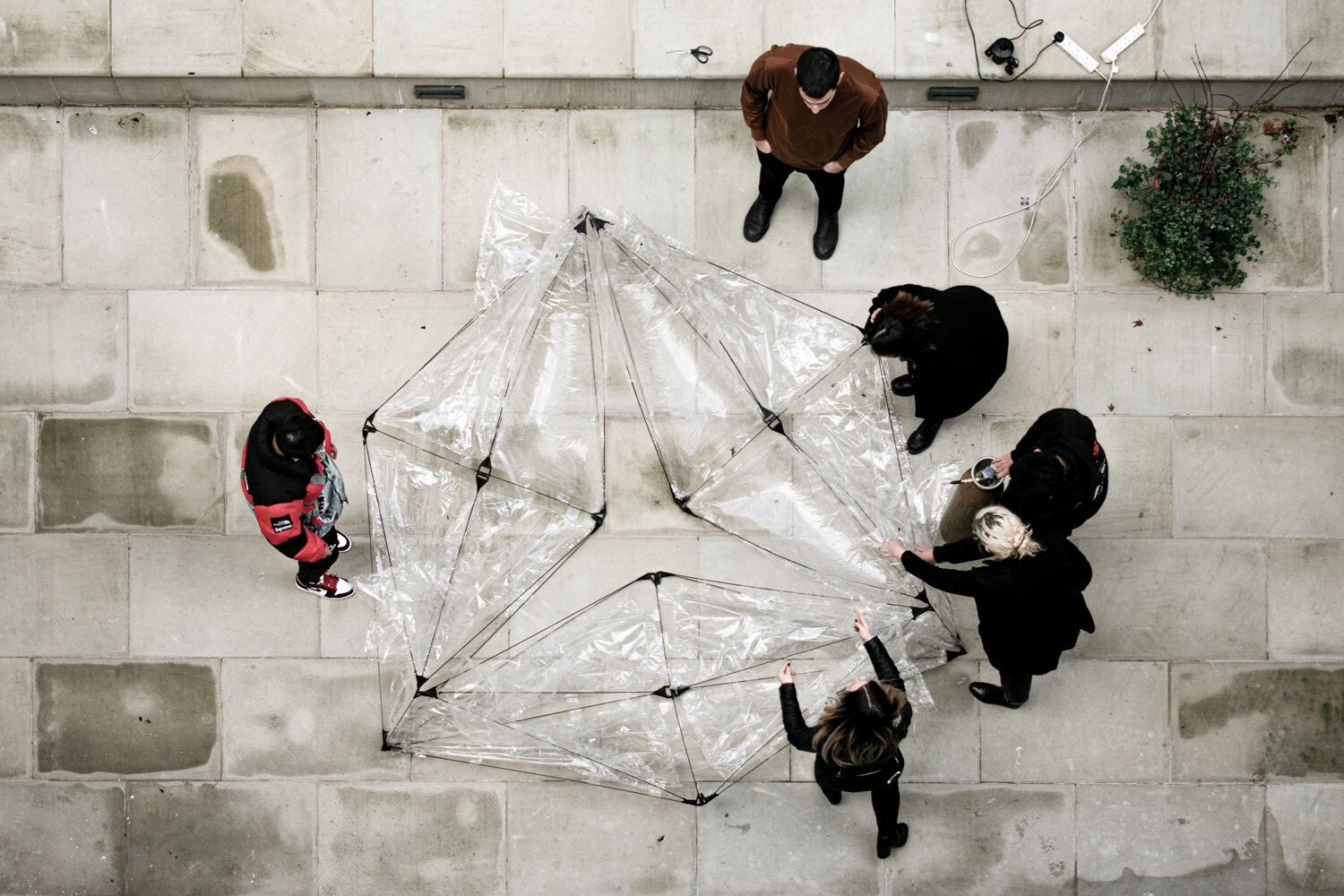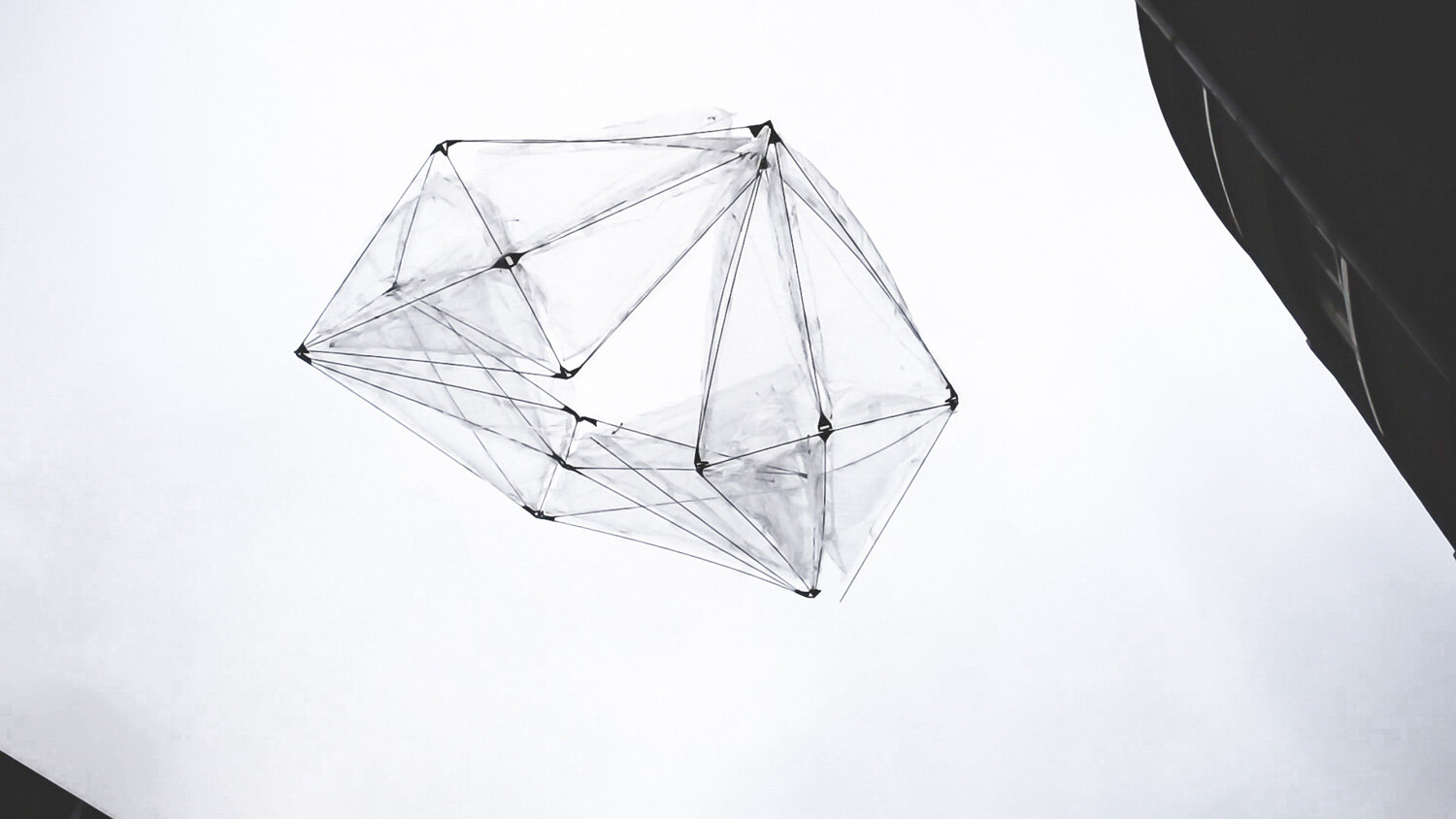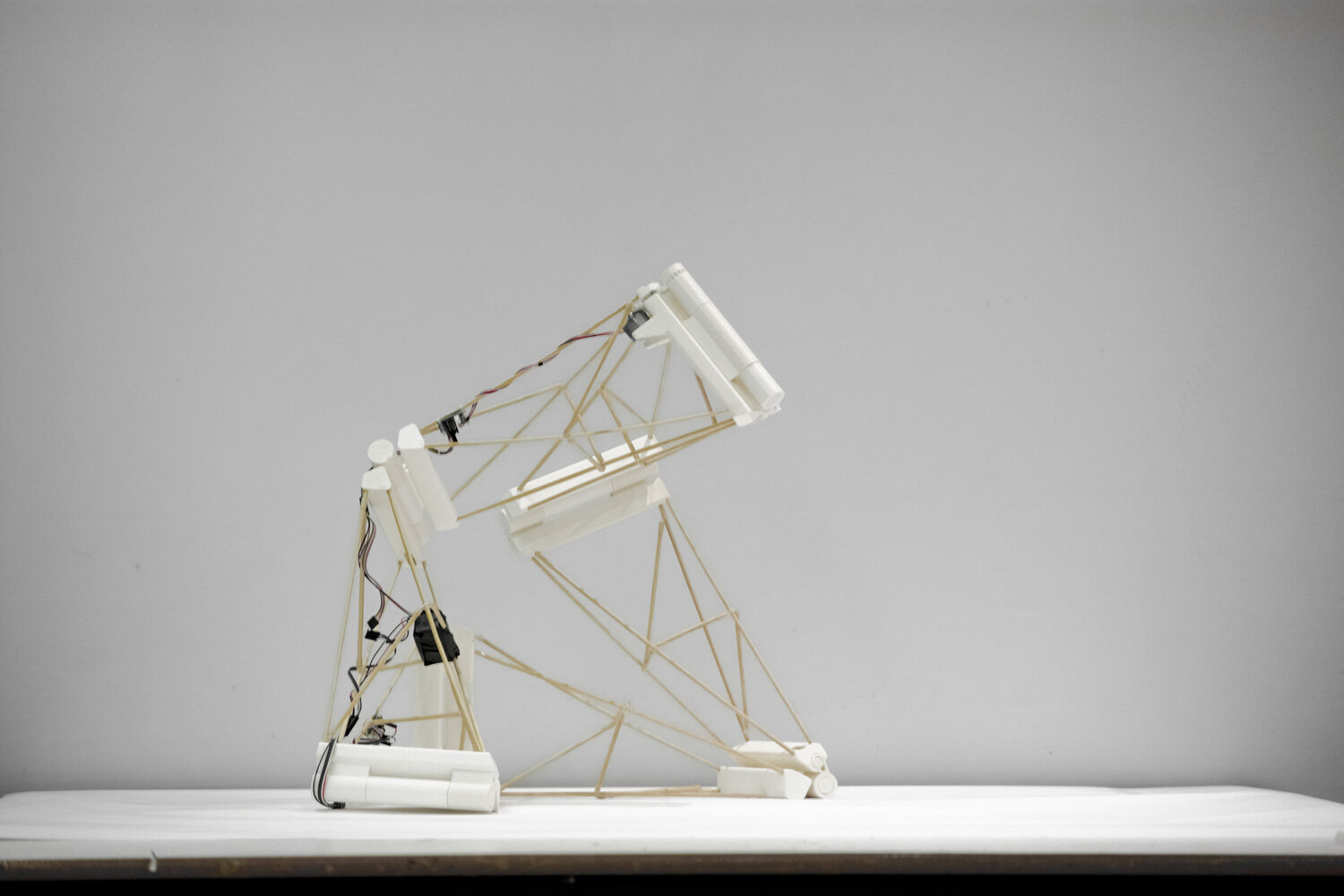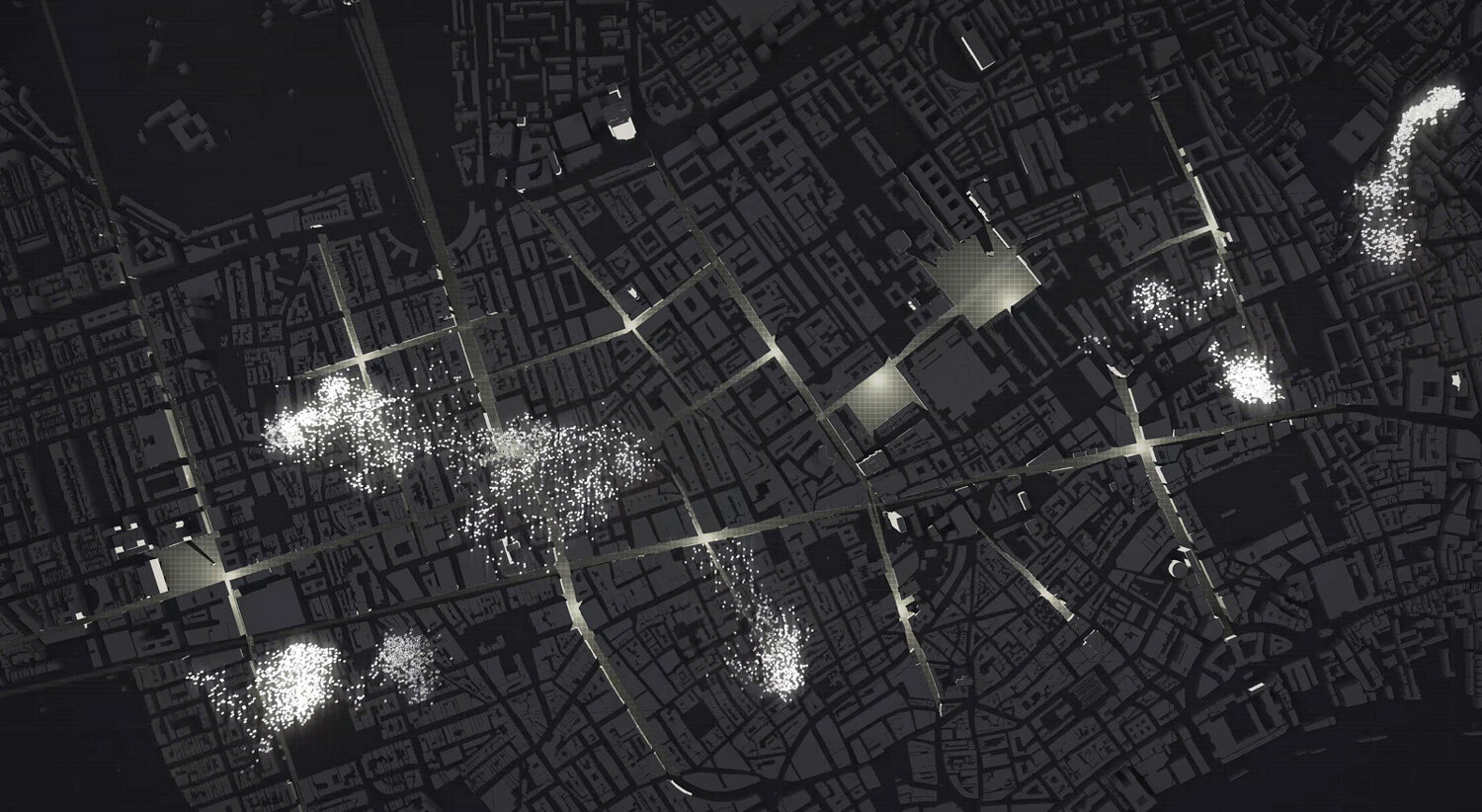Constructing agency 2018-2020
tropos
Studio Theodore Spyropoulos
Tutor Mostafa El-Sayed, Apostolos Despotidis
Team Evangelos Polykandriotis (Greece), Giulia Arienzo Malori (Mexico), Shiri Dobrinsky (Israel), Tao Yu (China)
Tropos is an aerial prototypical system that aims to generate an additional layer of infrastructure levitating above the urban fabric. We live in a world of complex relations. The interaction that occurs in between processes, facilitated by the advance of technology, generates and is being generated by rapidly changing environments. Within this context, we believe that architecture should be able to anticipate, adapt, and participate in these changes. Infrastructure should become architecture.
The existing infrastructure is characterised by its functional and operational role in the urban fabric. Distributed throughout the city, it is fundamentally invasive and permanent, while it consolidates the foundations of the urban layout. Instead, we propose a model for an infrastructure that aims to augment the experience of the city inhabitants through an interactive medium. We believe that infrastructure should be dynamic and flexible, having a tendency of temporality and non-invasiveness, and an ability to deform and adapt. These properties are to be achieved by bottom-up research methodologies.
Therefore, we are constructing our system in the air, allowing freedom in terms of mobility, leaving no footprint and liberating the ground level for free movement. The system operates by localised communication that generates a reactionary swarm of agents that perform at a higher level of organisation, ultimately enabling real-time decision making. It is the latter that makes the system adaptive and flexible. Achieving a sense of space within the temporary nature of the system requires the use of atmospheric element. This is facilitated using illumination and the transformable geometrical properties of the system itself. Those attributes, which are implemented in the individual unit, also serve as a strategy for mobility, formation and communication between units and with human participants, enriching the qualities of interaction. In a population, the coordination and cooperation within the system generates diverse spatial configurations, which enable the overall system to achieve continuously changing goals.
















